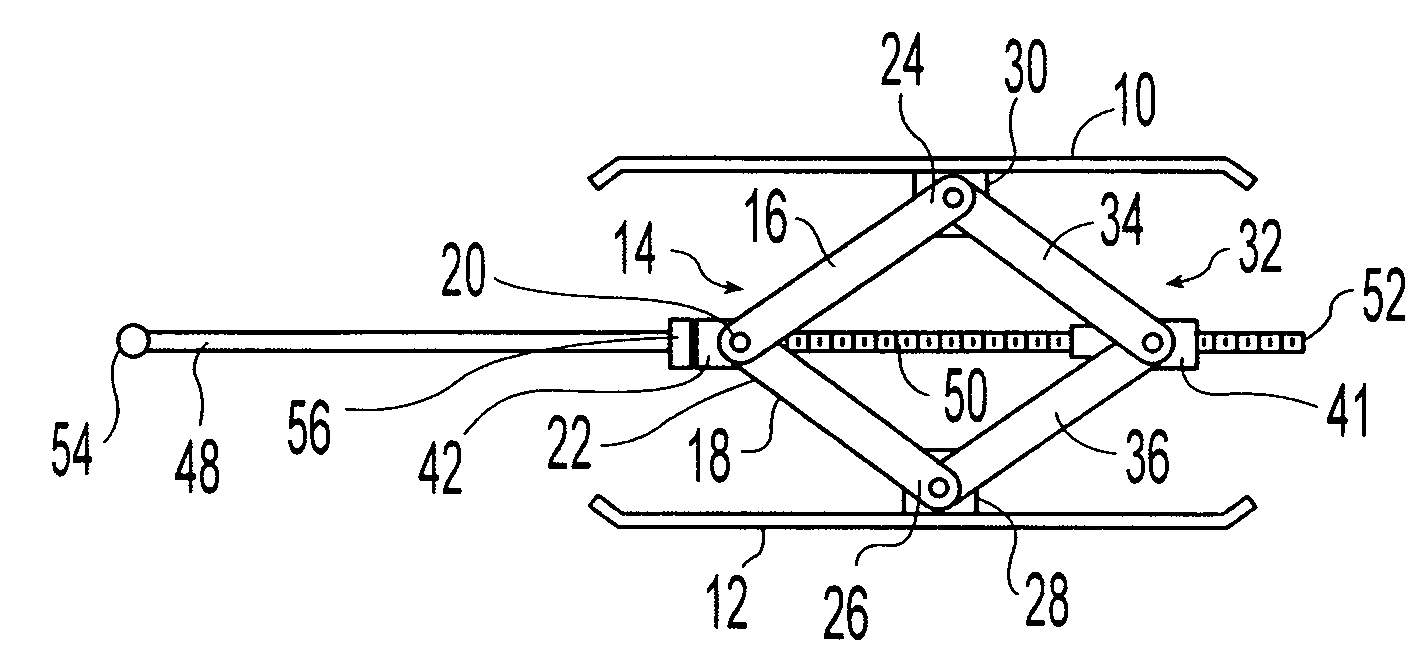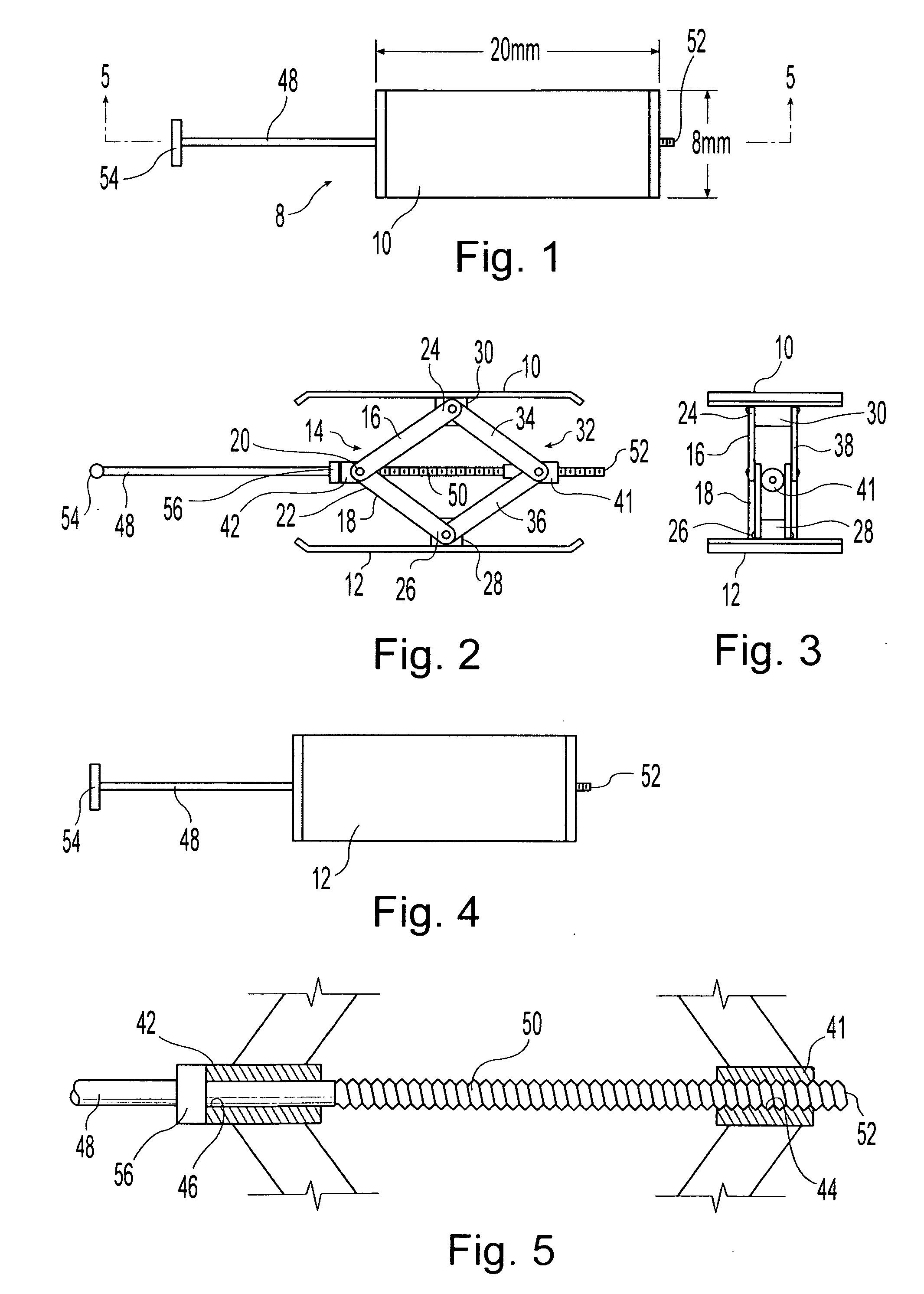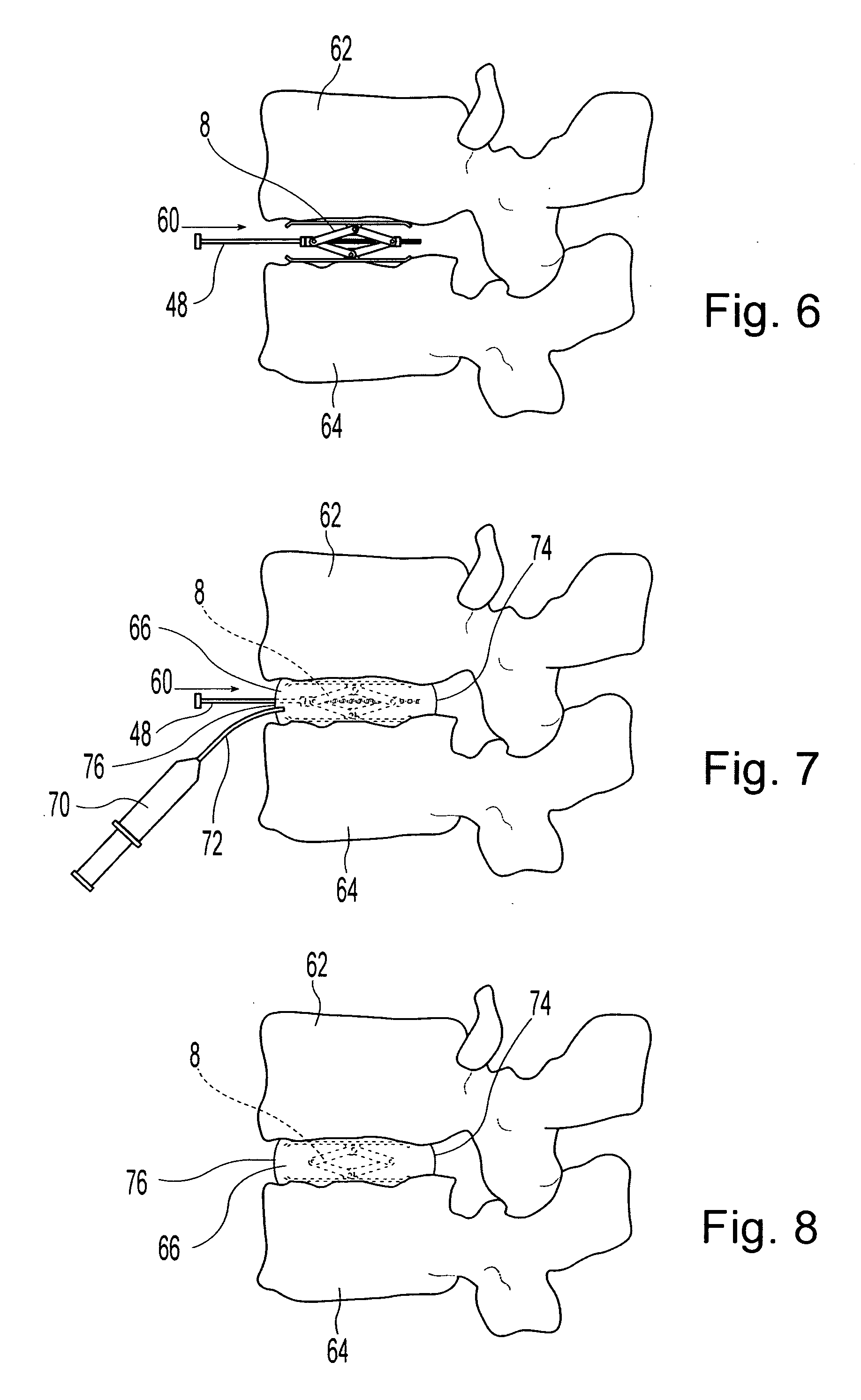Method and relaxable distracters for in-situ formation of intervertebral disc prosthesis
a technology of intervertebral discs and distraction devices, which is applied in the field of surgical devices and procedures, can solve the problems of loss of some or all of the load support and articulation capabilities, complicated mechanical structures that are therefore expensive, and difficulty in proper installation
- Summary
- Abstract
- Description
- Claims
- Application Information
AI Technical Summary
Benefits of technology
Problems solved by technology
Method used
Image
Examples
Embodiment Construction
[0036]FIGS. 1-5 illustrate an inter-body distracter 8 embodying the invention and capable of use in practicing the method of the invention. Two, longitudinally opposite, support feet 10 and 12 face longitudinally outwardly for engaging the surface of the adjacent bodies that are to be distracted. In the method of the invention those bodies are vertebrae but the distracter can be used in other environments. A first pair 14 of links 16 and 18 are pivotally joined together at their proximal, engaging ends 20 and 22. Their respective distal ends 24 and 26 are each pivotally joined to a different one of the feet 10 and 12 at respective foot bearings 28 and 30 that are fixed to the support feet 10 and 12. A second, mirrored pair 32 of links 34 and 36 are laterally spaced from the first pair 14 of links 16 and 18.
[0037]On the opposite side of the foot bearings 28 and 30 are two more laterally spaced pairs of links that are pivotally connected together and to the feet 10 and 12 in the same ...
PUM
| Property | Measurement | Unit |
|---|---|---|
| Force | aaaaa | aaaaa |
| Pressure | aaaaa | aaaaa |
| Diameter | aaaaa | aaaaa |
Abstract
Description
Claims
Application Information
 Login to View More
Login to View More - R&D
- Intellectual Property
- Life Sciences
- Materials
- Tech Scout
- Unparalleled Data Quality
- Higher Quality Content
- 60% Fewer Hallucinations
Browse by: Latest US Patents, China's latest patents, Technical Efficacy Thesaurus, Application Domain, Technology Topic, Popular Technical Reports.
© 2025 PatSnap. All rights reserved.Legal|Privacy policy|Modern Slavery Act Transparency Statement|Sitemap|About US| Contact US: help@patsnap.com



